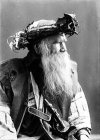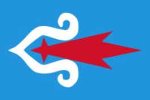shijing
The Living Force
I have often thought about what I would ask if I was there for a Cassiopaean session, and there is one question in particular I would like to ask as a historical linguist. It doesn’t pertain to any current events in a direct way, but it might have general interest as a historical question and intersect with some information from previous sessions.
So there are various language families that are strewn around the globe, most non-controversial, but there are larger groups of these families which are hypothesized to be related to each other, and these are controversial. Laura mentions a couple toward the beginning of Secret History (Nostratic and Sino-Caucasian), but they don’t really come up after that. Since there is evidence emerging that languages are often more useful in the reconstruction of prehistory than even genetic data, I can think of all sorts of questions I could ask, but I will focus on two interrelated ones for now.
Nostratic in its currently expanded form includes the following families: Indo-European, Kartvelian (a small family in the Caucasus), Dravidian, Uralic, Altaic (comprised of Turkic, Mongolic, Manchu-Tungus, Korean and Japanese) and most recently the Siberian families and isolates Yukaghir, Gilyak, Chukchi-Kamchatkan, and Eskimo-Aleut. Afroasiatic (which includes Semitic) is considered a sister branch, but not a part of Nostratic itself (a few would still include it, however).
In terms of the phenotype of speakers represented, there are two main groups – Caucasian in the west, and Asian in the east (with Dravidian speakers perhaps a sub-type of the first). This intersects with the Cassiopaean material in two ways:
First, in my understanding, Caucasians are historically Kantekkians which were relocated to Earth in an emergency when their planet exploded – that’s why Europeans have the phenotype they have (pale, blue- or green-eyed, etc), because they were adapted to a planet further from the sun. If Nostratic is a valid linguistic unit, does it essentially represent the original language of the Kantekkians? I know their relocation to Earth was supposed to have occurred pretty long ago (before the hypothesized sinking of Atlantis 12,000 years ago if I remember correctly), so I don’t know if the genetic-linguistic correlation would have maintained its integrity for that long, but there is currently no way to really verify that which is why it might be a good question.
Second, the putative Nostratic speakers in East Asia include the Asians that Laura seems to feel were the original shamans which she discusses in Secret History and elsewhere (she describes the Altaic speakers in particular). So if this is the case, and if Nostratic as a linguistic group can be correlated with an original population from Kantek, does that mean that both the early shamans of East Asia and the circle-people of Europe (which Laura contrasts with the pyramid people further south) have their origins on Kantek? And does the difference in phenotype between the two groups indicate admixture of the East Asian Kantekkians with a more native group that was already on Earth (presumably Sino-Caucasian speakers)?
In any case, thanks for opening this thread Vulcan59 (and thanks, Laura, for entertaining the questions here), and I look forward to seeing everyone’s questions and maybe the eventual answers to a few!
So there are various language families that are strewn around the globe, most non-controversial, but there are larger groups of these families which are hypothesized to be related to each other, and these are controversial. Laura mentions a couple toward the beginning of Secret History (Nostratic and Sino-Caucasian), but they don’t really come up after that. Since there is evidence emerging that languages are often more useful in the reconstruction of prehistory than even genetic data, I can think of all sorts of questions I could ask, but I will focus on two interrelated ones for now.
Nostratic in its currently expanded form includes the following families: Indo-European, Kartvelian (a small family in the Caucasus), Dravidian, Uralic, Altaic (comprised of Turkic, Mongolic, Manchu-Tungus, Korean and Japanese) and most recently the Siberian families and isolates Yukaghir, Gilyak, Chukchi-Kamchatkan, and Eskimo-Aleut. Afroasiatic (which includes Semitic) is considered a sister branch, but not a part of Nostratic itself (a few would still include it, however).
In terms of the phenotype of speakers represented, there are two main groups – Caucasian in the west, and Asian in the east (with Dravidian speakers perhaps a sub-type of the first). This intersects with the Cassiopaean material in two ways:
First, in my understanding, Caucasians are historically Kantekkians which were relocated to Earth in an emergency when their planet exploded – that’s why Europeans have the phenotype they have (pale, blue- or green-eyed, etc), because they were adapted to a planet further from the sun. If Nostratic is a valid linguistic unit, does it essentially represent the original language of the Kantekkians? I know their relocation to Earth was supposed to have occurred pretty long ago (before the hypothesized sinking of Atlantis 12,000 years ago if I remember correctly), so I don’t know if the genetic-linguistic correlation would have maintained its integrity for that long, but there is currently no way to really verify that which is why it might be a good question.
Second, the putative Nostratic speakers in East Asia include the Asians that Laura seems to feel were the original shamans which she discusses in Secret History and elsewhere (she describes the Altaic speakers in particular). So if this is the case, and if Nostratic as a linguistic group can be correlated with an original population from Kantek, does that mean that both the early shamans of East Asia and the circle-people of Europe (which Laura contrasts with the pyramid people further south) have their origins on Kantek? And does the difference in phenotype between the two groups indicate admixture of the East Asian Kantekkians with a more native group that was already on Earth (presumably Sino-Caucasian speakers)?
In any case, thanks for opening this thread Vulcan59 (and thanks, Laura, for entertaining the questions here), and I look forward to seeing everyone’s questions and maybe the eventual answers to a few!





